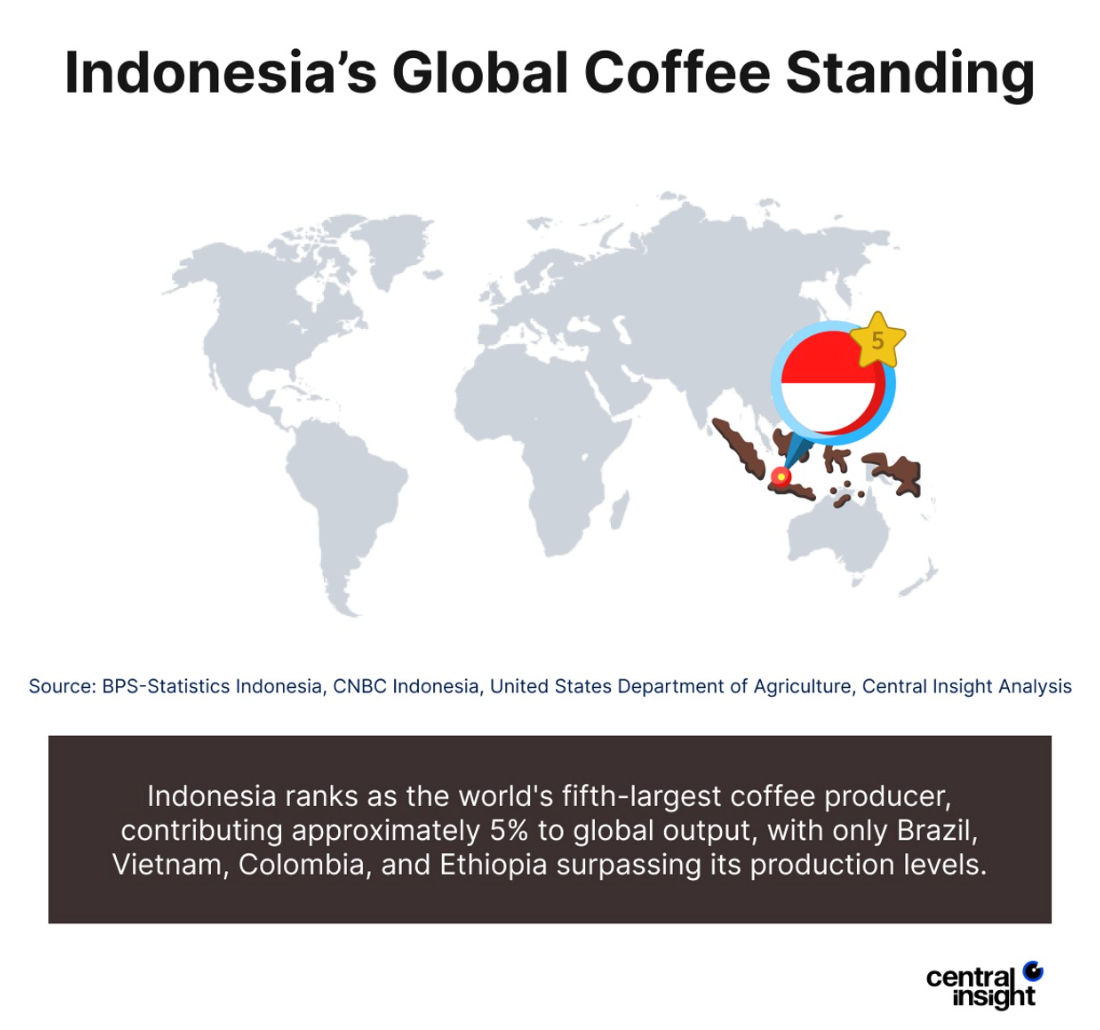
Indonesia stands as the world’s fifth-largest coffee producer, contributing about 5% to global output. Coffee Production in Indonesia has seen steady growth, primarily driven by increased productivity in key regions such as Sumatra and Java. Enhanced access to fertilizers, improved pest control, and rising domestic demand from Indonesia’s vibrant coffee culture have supported this growth.
Recent Production Trends of Coffee Production in Indonesia
In 2022, Indonesia produced 771,000 tons of coffee, benefiting from favorable weather conditions and the post-pandemic economic rebound. However, 2023 saw a decline in production to 756,100 tons due to the adverse effects of El Niño, which caused extreme drought, crop failures, and wildfires. This drop brought Indonesia’s five-year compound annual growth rate (CAGR) to just 8%.
Looking ahead, 2024 is expected to present further challenges. Reduced carry-over stock from the previous year and continued dry weather in key growing regions are likely to result in another decline in production. With domestic demand for coffee rising rapidly, Indonesia may need to increase imports to compensate for the shortfall.
Despite these obstacles, Coffee Production in Indonesia remains a crucial player in the global coffee industry. The government and private sector are investing in sustainable farming practices, climate-resistant coffee strains, and better infrastructure to help mitigate the effects of climate change. If these efforts are successful, Indonesia can maintain its position as a top coffee producer while ensuring stable supply for both local and international markets.








